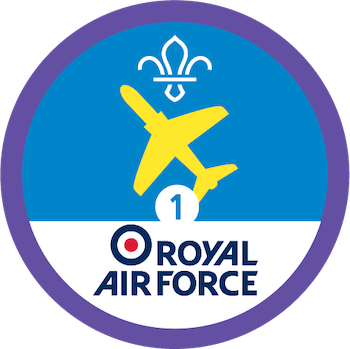
Radio Wright brothers
You’ll need
- Play dough
- Walkie talkies or phones
- Photos of planes
Before you begin
- As well as playdough and clay, you could also bring in some model planes for the group to build in a session or at home while exploring this topic.
- Make sure you have two separate rooms available for this activity. Both need to receive a good phone signal or have an adjoining wall(s) through which walkie-talkies can be used.
- Make sure you have enough adult helpers that each group communicating on a phone is supervised closely. An adult should remain in control of the phone with younger groups, and should begin each call.
- Make sure you have a decent selection of plane images for the groups to choose from. You could ask people to bring along their favourite aircraft images to use for this activity.
- If your group don’t use or don’t allow phones and you can’t find walkie-talkies, you could have groups sit back-to-back, with those facing one way describing the plane and those facing the other way building it.
Run the activity
- Everyone should get into groups of between four and six. Then, each group should split in half again. Decide which half of each group will be choosing a plane image and describing it to the other half of their group. Those people should choose their plane image and move to the other room. They’ll need a phone or walkie-talkie. A helper or helpers should also move to the other room.
- The remaining halves of each group should take some playdough or modelling clay in different colours (if available) and a phone or walkie-talkie.
- Each group should test to make sure they can communicate without any problems. They might like to switch on their walkie-talkies or call on their phones and share a plane-related message. Don’t forget to say ‘Over’ at the end of each transmission!
- When everything’s working as it should, those with the plane image should begin to describe the plane they’ve chosen to the others. Meanwhile, they should try to copy the description using the playdough or modelling clay. They’re allowed to ask questions too, if they have any.
- When the model builders are all happy with their planes, have the groups come together again to compare the image with the model.
- Groups should talk about what it was like on both sides of this activity (describing and building) and what the challenges were of working in two separate spaces.
- If there’s time, run this activity again, with the builders now picking a plane image from the selection and heading to the other room, and the describers taking playdough or clay to build it.
Reflection
We’re nearly all familiar with planes and most of us know exactly what they look like in our heads. We know they have wings, that they fly and that they’re controlled by pilots. So why might it be difficult to describe a particular plane to someone else who can’t see it? Communication without body language and recognising a plane without actually seeing it make this activity a lot tougher than it might first seem.
If you had time to swap roles, did this help? The group that received instructions before probably had a better idea of what needed to be said to get across what the plane looked like. Finding common ground is often the best way to communicate like this. Maybe think about what era the plane might be from, or what job it does. Your ‘details’ person could look into that! It might be something you learned about together at school or from watching a film. Getting on the same page like this is an essential element of teamwork and useful for lots of different team activities.
Safety
All activities must be safely managed. You must complete a thorough risk assessment and take appropriate steps to reduce risk. Use the safety checklist to help you plan and risk assess your activity. Always get approval for the activity, and have suitable supervision and an InTouch process.
- Phones and cameras
Make sure parents and carers are aware and have given consent for photography.
- A time limit (enforced or otherwise) puts the groups under more pressure and makes this activity tougher. That said, it will make the discussion afterwards about effective communication more interesting. Ambitious groups could have their builders work in radio silence (without asking questions) to explore how difficult this is.
- To make things easier, groups could discuss how they’ll communicate before they split. They could, for example, assign each person a role in each half of the group. So, one person to describe the plane, one person to define each part of the plane, one person to build the plane and one person to ask questions about the picture.
- Make sure that everyone has everything they need to complete the tasks in this activity. Groups need to bear this in mind when/if assigning each other roles.
- You could use model planes rather than pictures, which are tactile and might be easier for the group to describe.
All Scout activities should be inclusive and accessible.
There’s more model-building in the Air Activities Staged Activity Badge that might be fun for those who enjoyed making planes. Another extension might be to find some more detailed model kits online for people to try. Why not try finding instructions and then building the planes from recycled materials? You’ll need to agree which materials are suitable and which might not be so helpful.
Young people were responsible for their own role in the activity and had to make sure they communicated effectively to help their group. They also got to build the team’s favourite planes, in the way they imagined them.
